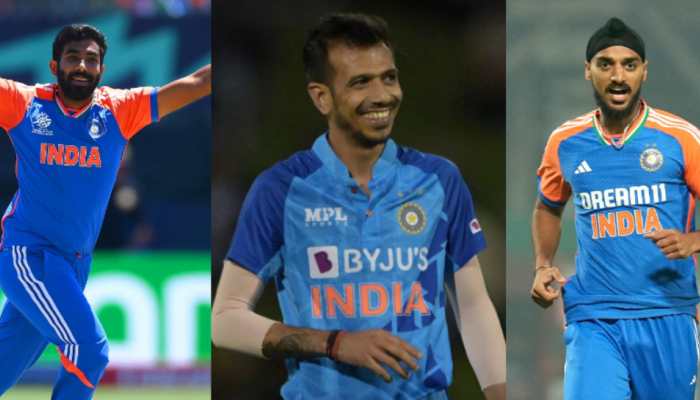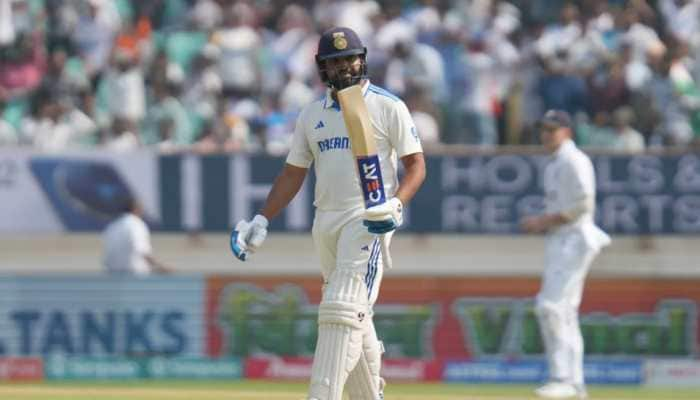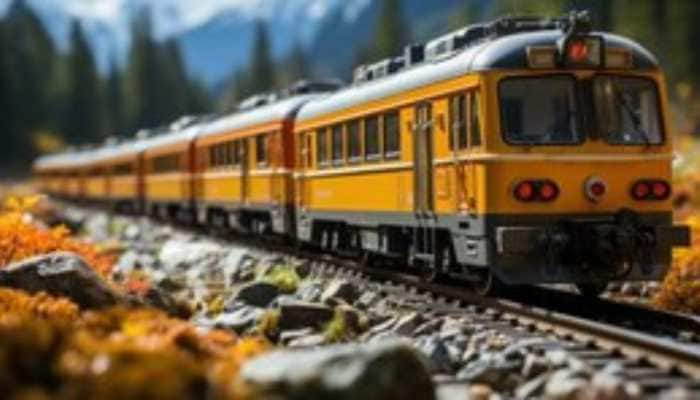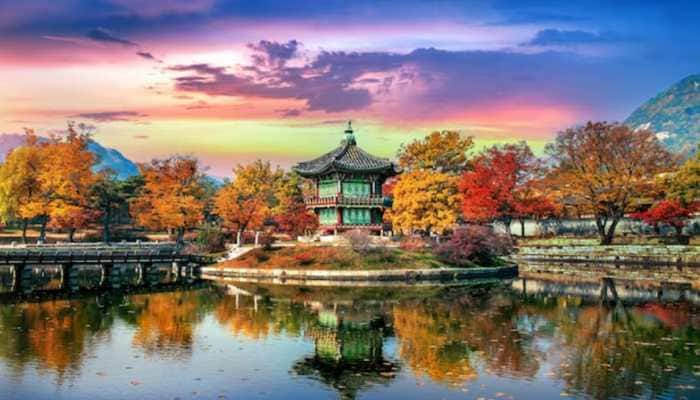PM Narendra Modi declares 12th South Asian Games open in colourful ceremony
Eight countries -- Afghanistan, Bangladesh, Bhutan, Maldives, Nepal, Pakistan and Sri Lanka, besides India -- will be vying for the top honours in the Games to be co-hosted by Guwahati and Shillong.
Trending Photos
)
Guwahati: The rich and diverse culture of India's Northeast was on display in all its splendour as curtains went up on the 12th South Asian Games in a colourful opening ceremony with Prime Minister Narendra Modi and a host of other dignitaries in attendance.
PM Modi declared the Games open at the Indira Gandhi Athletics Stadium to mark the formal beginning of the 12-day event to be competed by more than 2600 athletes.
Eight countries -- Afghanistan, Bangladesh, Bhutan, Maldives, Nepal, Pakistan and Sri Lanka, besides India -- will be vying for the top honours in the Games to be co-hosted by Shillong.
"I declare the 12th South Asian Games open," Modi said amid cheers from a capacity crowd at the stadium.
Present on the occasion were governors of Assam and Meghalaya, chief ministers of the two states, besides Union Sports Minister Sarbananda Sonowal and IOA president N Ramachandran among others.
Postponed several times due to various reasons, the much -delayed but the biggest ever South Asian Games being held under the aegis of South Asian Olympics Council begins after a delay of four years.
The 'Gender Equal Games' will have 23 disciplines and 228 events, with all the sports having both men and women's sections for the first time, making this edition the biggest ever sporting spectacle in South Asia.
There will be 228 gold, 228 silver and 308 bronze medals on offer this time. The two North Eastern cities will play host to 3,333 athletes and officials.
India, who had topped the medal tally in all the editions so far, have the largest number of participants with 521 athletes (245 women).
The ceremony began with the athletes' march past alongside the Games mascot 'Tikhor' leading it. Afghanistan led the march past with hosts India coming in the last.
Each country's contingent had two children -- one boy and one girl -- in front holding the waters from a river from their country.
The waters from Kabul (Afghanistan), Sindhu (Pakistan), Indian Ocean (Maldives as it has no river), Mahaweli (Sri Lanka), Padma (Bangladesh), Kosi (Nepal), Manas (Bhutan) and Brahmaputra (India) were later mixed as one to show oneness of South Asia and then taken to be immersed in Brahmaputra.
Understandably, the Indian contingent led by flagbearer and squash player Sourav Ghosal got the loudest cheer though the athletes from Pakistan and Nepal also got a big round of applause from the crowd
Ghosal later took the oath on behalf of all the athletes to play in fair manner under rules and regulations.
The highlight of the sports section -- the other being cultural section -- was the digital lighting of the Games' flag with former India football captain Bhaichung Bhutia doing the honours.
Sikkimese Bhutia, who was Indian football's poster boy for many years before his retirement in 2011, took the Games torch from Gagan Narang, Monalisa Baruah, Bhogeshwar Barua, Rani Rampal, Krishna Poonoia and Anju Booby George.
Just as Bhutia touched a spot at the central platform of the stadium, the digital fire spread in two concentric circles with the inner ring showing a burning fire before the actual one was lit atop the stadium stand opposite the VIP podium.
This was followed by fireworks and show of laser lights in the ceremony which lasted two hours and 45 minutes.
Some of the Indian women were wearing blue saree and black blazer, while others were clad in a black suit. However, the women had different coloured shoes. Among the men, most wore brown trousers and black blazer.
There was one member of the Indian contingent who was dressed in blue tracksuit. Members of other contigents, however, were clad in a uniform dress code.
The cultural part was spectacular with the showcase of Northeast India's rich and diverse tradition, art and folklore and at the same time display of technological advancements.
The second part of the memorable evening began with the rendition of Games song penned by late world famous singer Bhupen Hazarika 'Ei Prithvi ek Krirangan (the whole world is a playground)'
The flawless cultural show had two part -- one showcasing Northeast and the other about composite India. Famous Assamese singer Zubeen Garg left the spectators in awe with his rendition 'All of you oh brothers'.
This was followed by unique dances of the eight states of Northeast India, including 'pung cholom' and 'Ras Leela' dance of Manipur, Naga dance and bamboo dance of Mizoram. But the most applauded was naturally Assamese 'Bihu' dance (harvesting festival dance) of the host state.
Then the well-known 'Shillong Choir' performed its own version of 'Vande Mataram'. The India part of the cultural show had themes of an advancing country with big strides in technology and digital communication.
India's artificial satellite Mangalayan was shown at the background with artists performing on A R Rehman's 'Jay Ho'. They formed a moon shape with the three colours of Indian flag forming the circle.
There were also dance performances of other Indian states together including that of the Northeast.
Then cycle riders came out amid a sea of breathtaking laser lights followed by performers making alien like creatures at the central platform to the huge cheers from the crowd. The grand show ended with the rendition of 'Ei Prithvi ek krirangan' again.
Stay informed on all the latest news, real-time breaking news updates, and follow all the important headlines in india news and world News on Zee News.
Live Tv







)
)
)
)
)
)
)
)
)
)
